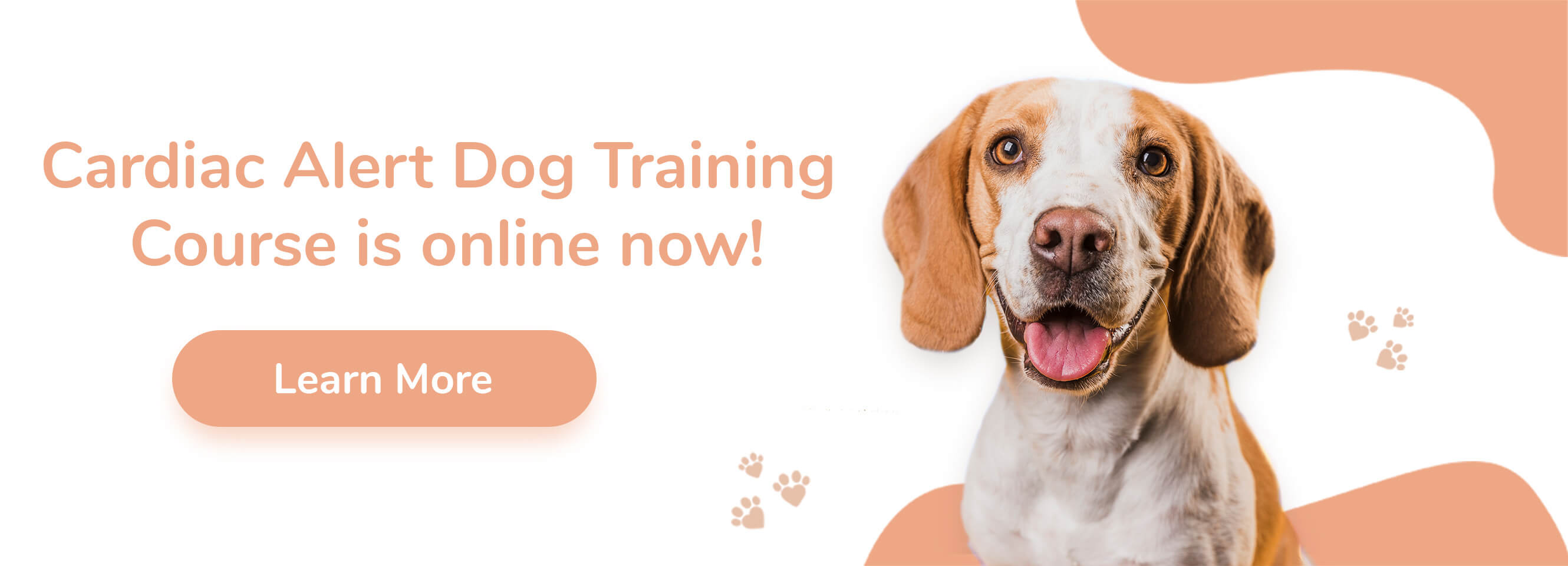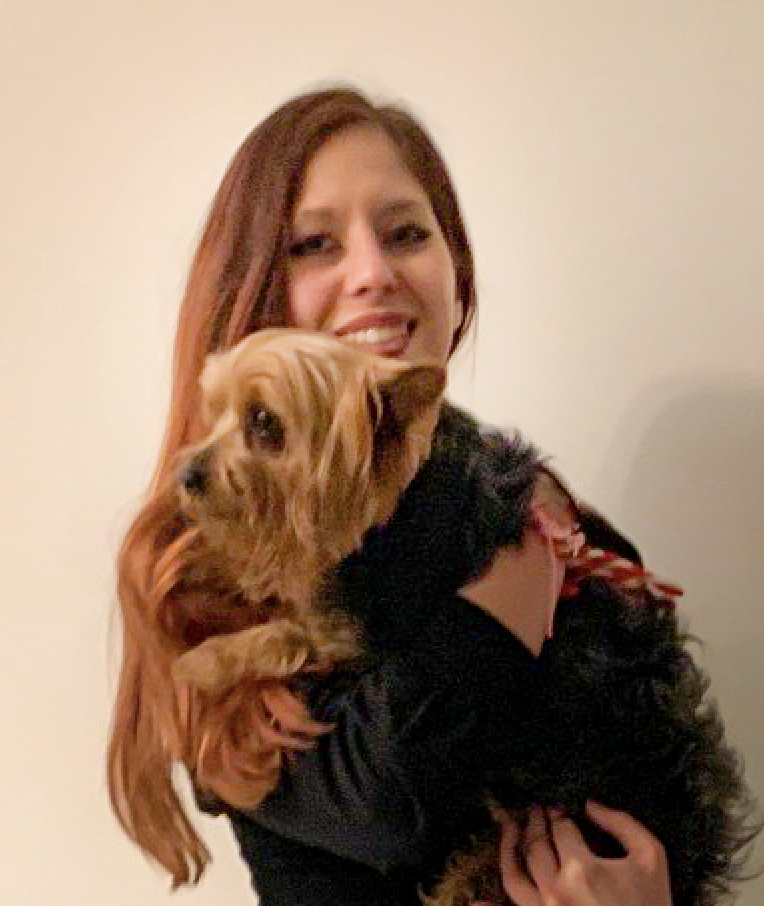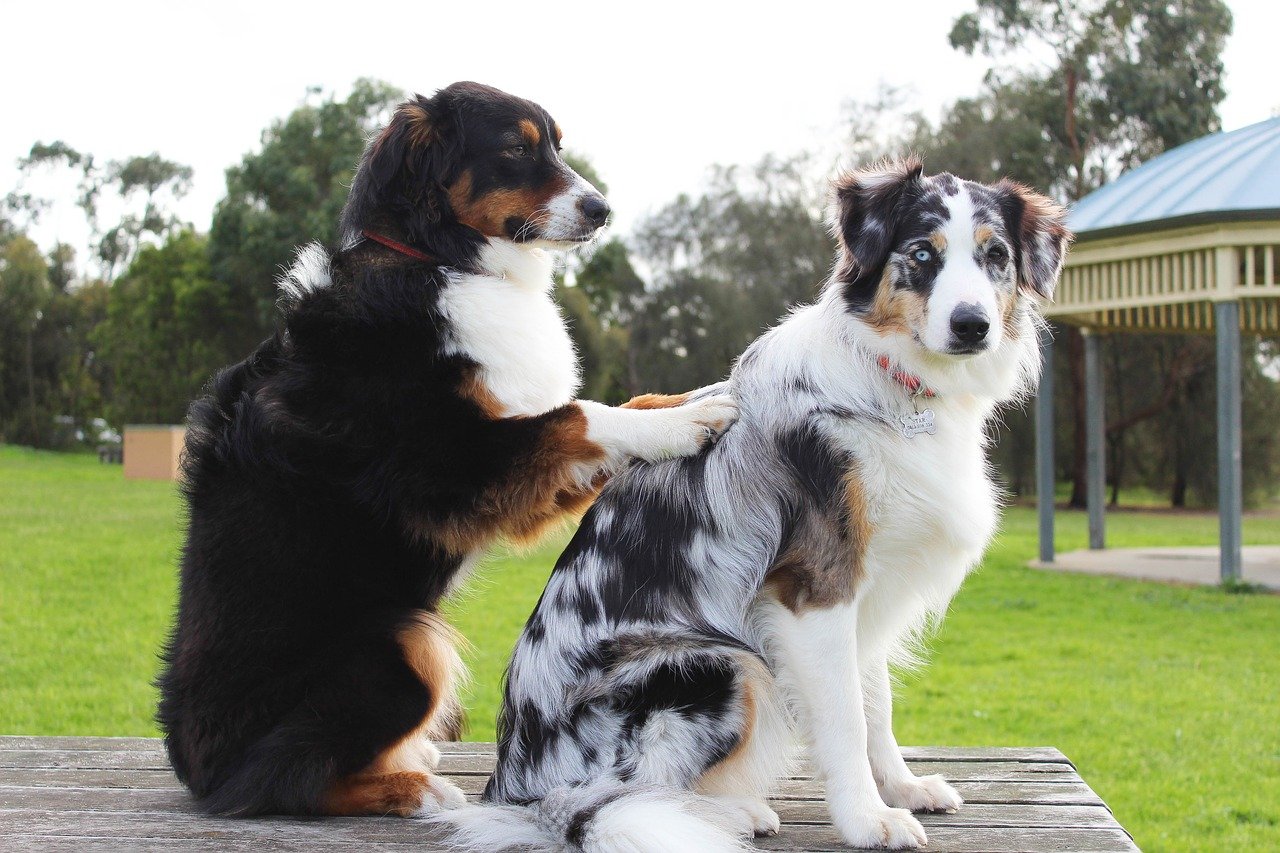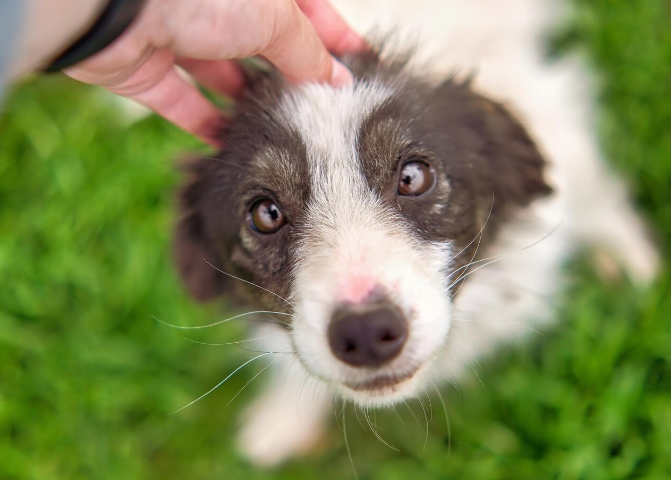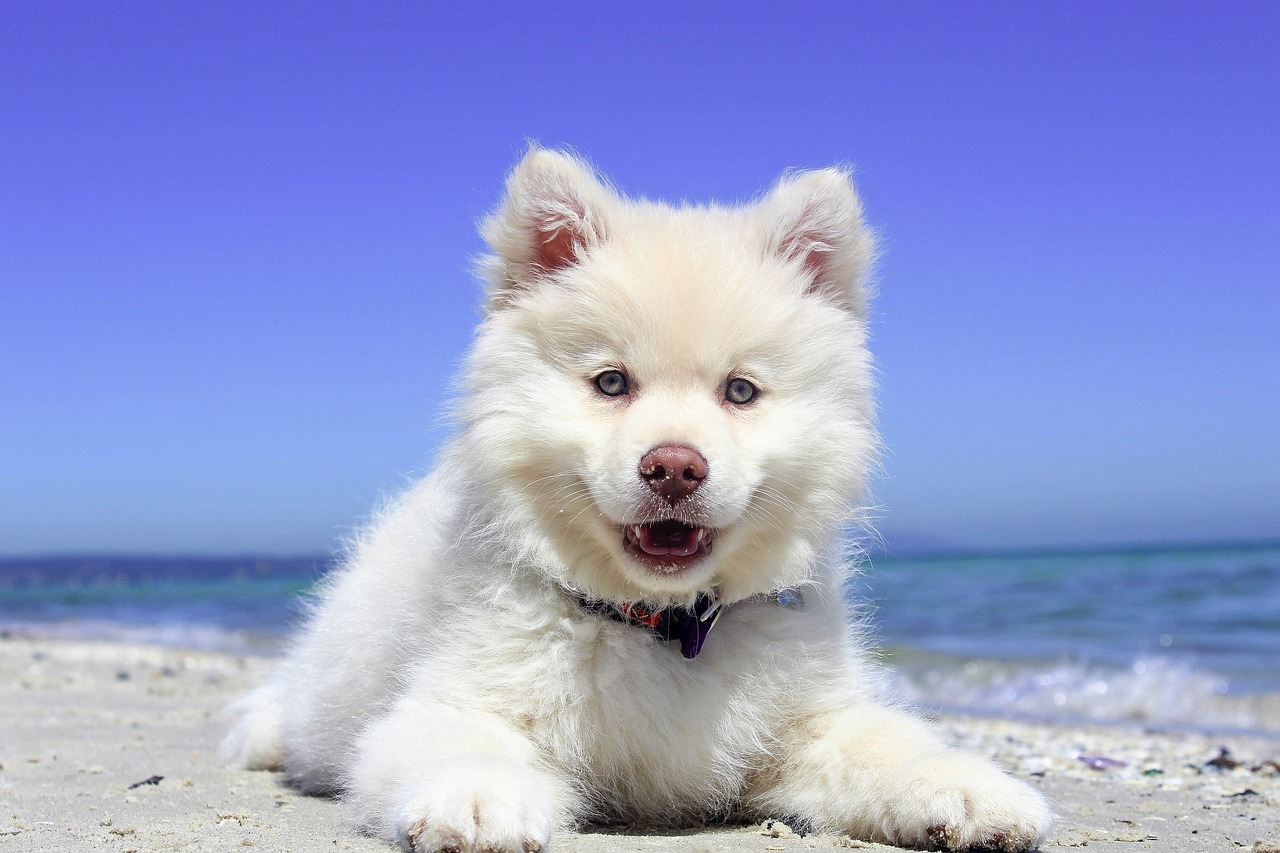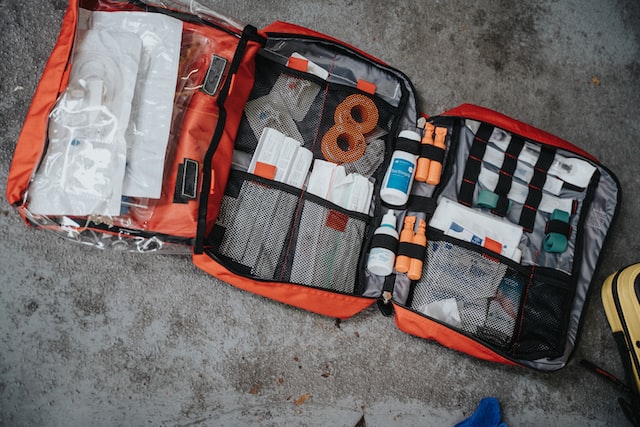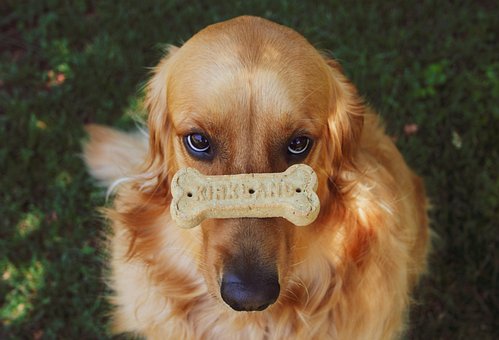
Being a pet owner is associated with many responsibilities, as well as investing time and money. However, it also means having a lot of fun! Talking about having fun with our paw friend, several things come to my mind- playing with him/her, cuddling with him/her, watching him/her chase his/her tail, and doing his/her “dog” stuff and teaching him/her tricks. By “tricks” we mean both funny things that can barely be used in daily life and also tricks, that can be seen as useful tasks.
Today, we will talk about both types of tricks and will let you know how to have even more fun with your doggy.
Common Methods to Teach Your Dog a Trick/Task
Before we begin, we want to clarify the difference between the two common approaches to training a dog to exhibit a certain behavior:
1. The luring method;
2. The capturing method.
The first one is based on luring the dog with food/treats to encourage him/her to do a certain task. The second approach is based on the natural behaviors that dogs perform. The owner should wait for the dog to show the behavior on his/her own, then mark the behavior with a clicker or a cue word and reward him/her.
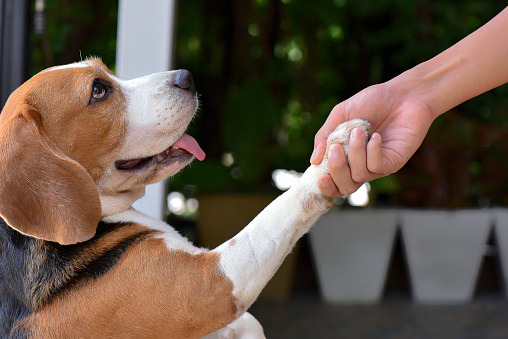
Tricks for Fun
Shake Paws
If you would like to impress your guests, you can teach your paw friend to greet them by shaking hands (paws). This is among the easy tricks that dogs can be taught to perform as they have the natural instinct to use their paws.
An easy way to teach your paw friend the “shake” trick is to let him/her sit (in case your dog still does not know basic obedience, you will need to train him/her commands like “sit”, “stay” and “come”, prior to teaching him/her various tricks). Once he/she is in a sitting position, show him/her a treat, then hold it in your hand, closed in a fist. Wave your hand in front of his/her face (near the nose). Your paw friend is likely to sniff at the treat and try to get it. When he/she sees that you will not open the fist, he/she may start digging with the paw. Once your canine touches your hand, you should click with a clicker and reward him/her (give him/her to treat in your hand). After several repetitions every day (no longer than 10 minutes per session), you can start implementing a voice command that will replace the clicker. The command can be “shake” or any other word you have chosen. Over time your dog will start giving a paw once he/she hears the command (the cue word you have chosen).
After your dog has understood the concept, you can try holding the treat in the other hand. When he/she gives a paw, give him/her the treat from the other hand. If your paw friend gets confused, you should stop the session and move one step back. He/she may need to practice the easier steps prior to moving to the more difficult ones.
Over time, you can start offering a treat less frequently and also move from treats of a high value to treats of a lower value. This is needed for your dog to learn to perform the command even without receiving a treat.
Wave
If you would like to teach your dog to wave, you will need to train him/her in the “shake” trick first.
Give your paw friend the “shake” command. When he/she stretches his/her paw towards you, you should slightly move your hand up. That way your canine will need to move his/her paw a bit higher to reach your hand. Once your doggy moves his/her paw higher, you should click and reward him/her. After a few repetitions, you can start moving your hand a bit higher, so that your paw friend will need to lift his/her paw even more. Once your dog understands the idea and is able to lift his/her paw several times in a row, you can start implementing a cue word, such as “wave”. You should practice the new command and once you notice that your paw friend can perform it without hesitation, you can stop giving the “shake” command and directly move to the “wave” command.
Begging
We would like to note that this trick is not suitable for all dogs. You should make sure that your paw friend has reached physical maturity and that his/her bone structure has fully developed. Small breeds reach physical maturity quicker than large breeds (8-9 months compared to 1-2 years). Also, you may need to invest more time and patience in teaching your doggy this trick, compared to other tricks.
Give your doggy the “sit” command and wave a treat in front of his/her face. Then you should start slowly moving the treat higher so that your paw friend will need to move his/her head up to get closer to the treat. Once your canine stretches his/her nose up, you should click, praise him/her and give him/her a reward. You will need to repeat these steps a few times so that your paw friend gets used to this behavior.
After several repetitions, you can increase the requirements a little by clicking and rewarding your canine if he/she moves from the ground one of his/her paws as well. Repeat this several times, until your dog becomes consistent at performing the task. You should gradually set the bar higher and reward your paw friend only after he/she has performed the “more difficult version” of the trick. You should make sure that your canine can perform every new behavior really well before moving to the more difficult one, which brings your canine one step closer to the wanted position.
After enough repetitions, you can remove the treat in your hand, and use a hand signal instead. Also, you can add the cue word “beg”. Once your dog is able to perform the trick and can stand up on two legs, you should start rewarding him/her only for doing the complete task on command.
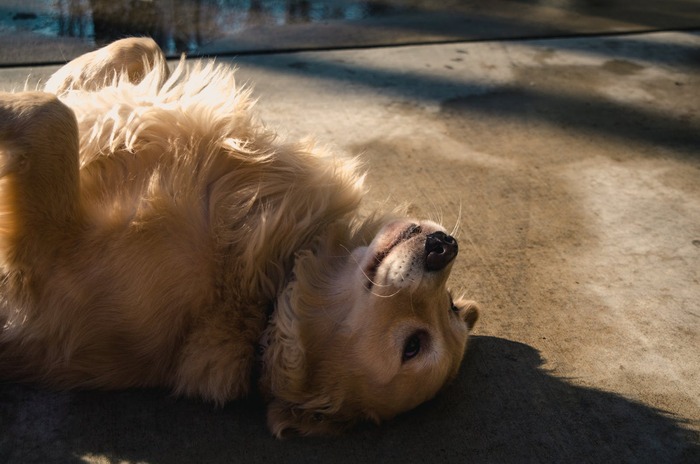
Roll Over
In order to teach your dog to roll over, he/she needs to know the “down” command first. The easiest way to train your doggy to get into a lying position is to wave a treat in front of him/her, let him/her smell it, and give him/her a command to sit. After that, you should slowly move your hand down to the floor. Your canine is likely to follow the treat. Once he/she reaches the floor, use the cue words “lie down” and reward him/her. Repeat several times until your dog masters the command.
So, we are moving to the fun part- teaching your paw friend to roll over.
Give your paw friend the “down” command and once he/she does it, kneel down beside him/her. Wave a treat close to his/her nose, so he/she can smell it. Then, you should move the treat towards his/her shoulder which may encourage him/her to roll on one side. Repeat this several times and reward your paw friend right after he/she has shown this behavior.
Here comes the tricky part- while your dog is lying flat on the floor, you should start moving the treat from the shoulder towards the spine, so that he/she will roll onto his/her back. You should keep moving the treat so that your paw friend rolls on the other side.
When you notice that your dog performs the trick on a regular basis (consistently follows the treat and rolls over), you can add a cue word/words. It can be “Roll over” or anything else per your preferences. The greater your dog’s performance gets, the less frequently you can use treats and move your hand. At some point, your canine will be able to do “roll over” on command only.
Play Dead
Most people are really impressed with this trick! We will be happy to let you know, that it is not as difficult as you may think it is!
If you would like to use the luring method, you should prepare treats and give your dog a command to lay down. Then you should kneel down while holding the treat. Start slowly moving the treat from one side of the head towards the shoulder. Your paw friend is likely to lay down on one side. At this point, you should say the cue words, i.e. “play dead”. Repeat the steps several times, until your canine understands the task. Gradually you can start giving a reward after your dog has gotten into the position and managed to remain in it for a few seconds.
If you prefer to use the capturing method, you just need to wait for your paw friend to lay on one side, i.e. while having a rest. When he/she does it, you should say the cue word or click with the clicker and reward him/her.
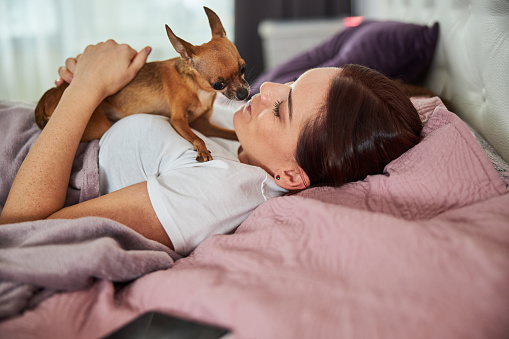
Useful Tasks
The next group consists of tasks, that can find application in dog training and even in service dog training. You can use these not only to spend pleasant time with your dog and bond with him/her but actually train him/her tasks, that will benefit you in your daily life.
Give a Kiss
This task is among the easy tasks to train your dog. However, the stronger the bond between a dog and his/her handler is, the easier he/she will learn to perform it. Also, you can adapt it in a way that suits you, i.e. if you do not want your paw friend to lick you on the face, you can train him/her to lick you on the arm instead.
This task can help you in different ways- train your dog to give you a kiss, when you feel emotionally overwhelmed, have an anxiety episode when you want him/her to alert you or remind you of something, or if you would like to prevent him/her from licking you anytime he/she wants.
The easiest way to teach your canine this task is to put peanut butter or cream cheese on your cheek/arm. Say a cue word like “kiss”, or “give a kiss” and get closer to your dog. If you practice these steps several times a day, your paw friend will be able to perform the task very quickly!
Also, you can wait for your paw friend to show this behavior on his/her own. When he/she gives you a kiss, you should say the cue word or click with the clicker to mark the behavior and reward him/her.
We would recommend that you double-check the ingredients of the foods you use, and make sure that they do not contain Xylitol, as it is toxic for dogs.
Nose-Nudge
Dogs use their excellent sense of smell to navigate their surroundings. Prior to using their mouths or paws to investigate an object, dogs are likely to sniff at it. Giving a nudge on command is also a very useful task, which is also among the common Psychiatric Service Dog tasks.
In order to train your paw friend to do this task, you should hold a treat in your hand and wave it in front of your dog. Then close the hand into a fist. Your canine is likely to start sniffing at your hand. At the moment when he/she touches your hand with his/her nose, you should click with a clicker and open your hand. Repeat these steps several times a day and gradually set the bar higher- do not open your hand immediately, but let your dog nudge a bit longer before he/she gets a reward. Also, you can add a cue word like “nose-nudge”, or “give a nudge”. Practice until your doggy can perform the task on a regular basis.
Speak
You can benefit from this command if you would like to prevent your dog from excessive barking or if you would like to train him/her to alert you as part of service dog training.
Training a vocal dog to speak will be much easier than trying to teach a non-vocal dog to bark. If your dog is naturally vocal, you just need to wait for him/her to bark, mark the behavior with a clicker or a cue word such as “speak”. Praise and reward him/her with delicious treats immediately. If your paw friend is not food-motivated, you can give him/her toys instead.
Non-vocal dogs will need to get excited enough to perform the task, i.e. you can start talking loud, jumping, turning on the TV and the radio, jumping around...anything that can motivate your paw friend to bark. Once he/she barks, you need to mark the behavior and reward him/her.
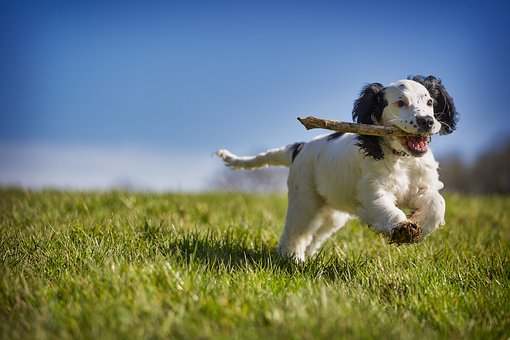
Take It + Bring It
We have listed these tasks together, as “bring it” is the task that logically comes after “take it”. In other words, your dog should already know how to take an item, before being able to bring it. Here are several simple steps you can follow to teach your dog to take:
Put your dog’s favorite toy on the floor and wait for him/her to pick it up. Once he/she does it, click and reward him/her. Once he/she is able to perform the task consistently, you can implement a cue word, such as “take”, and then give a reward. Repeat several times until there is no hesitation to pick the toy. Over time you can start practicing with various objects, including medication, in case you train your dog as a service animal.
Once your dog knows this command, you can move to the next one: “Bring it”. Give your paw friend the “take it” command. Then you should encourage him/her to come closer to you (i.e. including through gestures, and body language). If your dog brings the toy even a few steps closer to you, click and reward him/her. Repeat these steps several times and continue encouraging him/her to come closer to you. You should click and give a reward, every time your paw friend moves towards you with the toy. Practice, until your canine can bring the toy without hesitation. You can incorporate the cue word “bring”. The last step is to place the toy on the floor and give both commands “Take” and “Bring”. Never forget to praise and reward your canine when he/she shows the wanted behavior.
Name
Teaching your dog his/her name, or the so-called “recall”- recognizing his/her name and responding to it, is among the most common and popular tasks that dog training includes. This task can be very beneficial, i.e. if you and your paw friend are outside and you need him/her to come back (i.e. he/she is about to cross a busy street); Also, knowing his/her name is the foundation of focus training as in order to teach a dog to make eye contact and remain focused, you need to call him/her first.
Call your dog by name and the moment he/she makes eye contact with you, you should click and reward him/her. Repeat these steps several times a day, until your paw friend starts making eye contact immediately after you call him/her.



